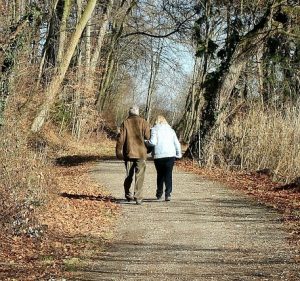While older people most often fall because of a slip, trip or loss of balance, up to 25% of falls remain unexplained (Anpalahan & Gibson, 2012; Davies & Kenny, 1996; Lord et al., 1993). People who have had unexplained falls report having fallen because of a blackout, dizziness, feeling faint or “having found themselves suddenly on the ground”. Currently, knowledge regarding risk factors and effective prevention interventions for unexplained falls experienced by older people living in the community is uncertain. This is because studies to date have involved participants who were primarily attendees of hospital clinics specifically designed to investigate cardiovascular causes of falls. We therefore undertook a study in 529 older community-living men and women to examine the occurrence of unexplained falls and their potential causes across a broad range of putative demographic, physical, medical, physiological and psychological factors.
WHAT DID WE FIND?
Out of 238 participants who reported falling once or more in the one-year follow up, 15% of them suffered unexplained falls. Interestingly, none of the cognitive and physical function tests discriminated between groups. Rather, the findings pointed to cardiovascular, pharmacological and psychological factors. Compared with balance-related fallers and non-fallers, unexplained fallers were more likely to suffer from orthostatic hypotension (significant drop in blood pressure when standing up) (39% versus 22%) and depressive symptoms (24% versus 9%). We also found that more unexplained fallers than balance-related fallers suffered injurious falls (89% versus 71%).
SIGNIFICANCE AND IMPLICATIONS
Our findings therefore, suggest that falls prevention interventions for older people suffering from unexplained falls should involve therapies primarily targeting psychological, cardiovascular and pharmacological factors.
Future research should investigate whether psychotherapies and physical exercise to raise mood as well as medication reviews and non-pharmacological therapies for the treatment of orthostatic hypotension and depression are effective at reducing the risk of unexplained falls in older people.
PUBLICATION
Menant JC, Wong AK, Trollor JN, Close JC, Lord SR. (2016) Depressive symptoms and orthostatic hypotension are risk factors for unexplained falls in community-living older people. J Am Geriatr Soc, 64(5), 1073-8.
REFERENCES
Anpalahan M, Gibson S (2012) The prevalence of Neurally Mediated Syncope in older patients presenting with unexplained falls. Eur J Intern Med, 23, e48-52.
Davies AJ, Kenny RA (1996) Falls presenting to the accident and emergency department: types of presentation and risk factor profile. Age Ageing, 25, 362-6.
Lord SR, Ward JA, Williams P, Anstey KJ (1993) An epidemiological study of falls in older community-dwelling women: the Randwick falls and fractures study. Aust J Public Health, 17, 240-5.

